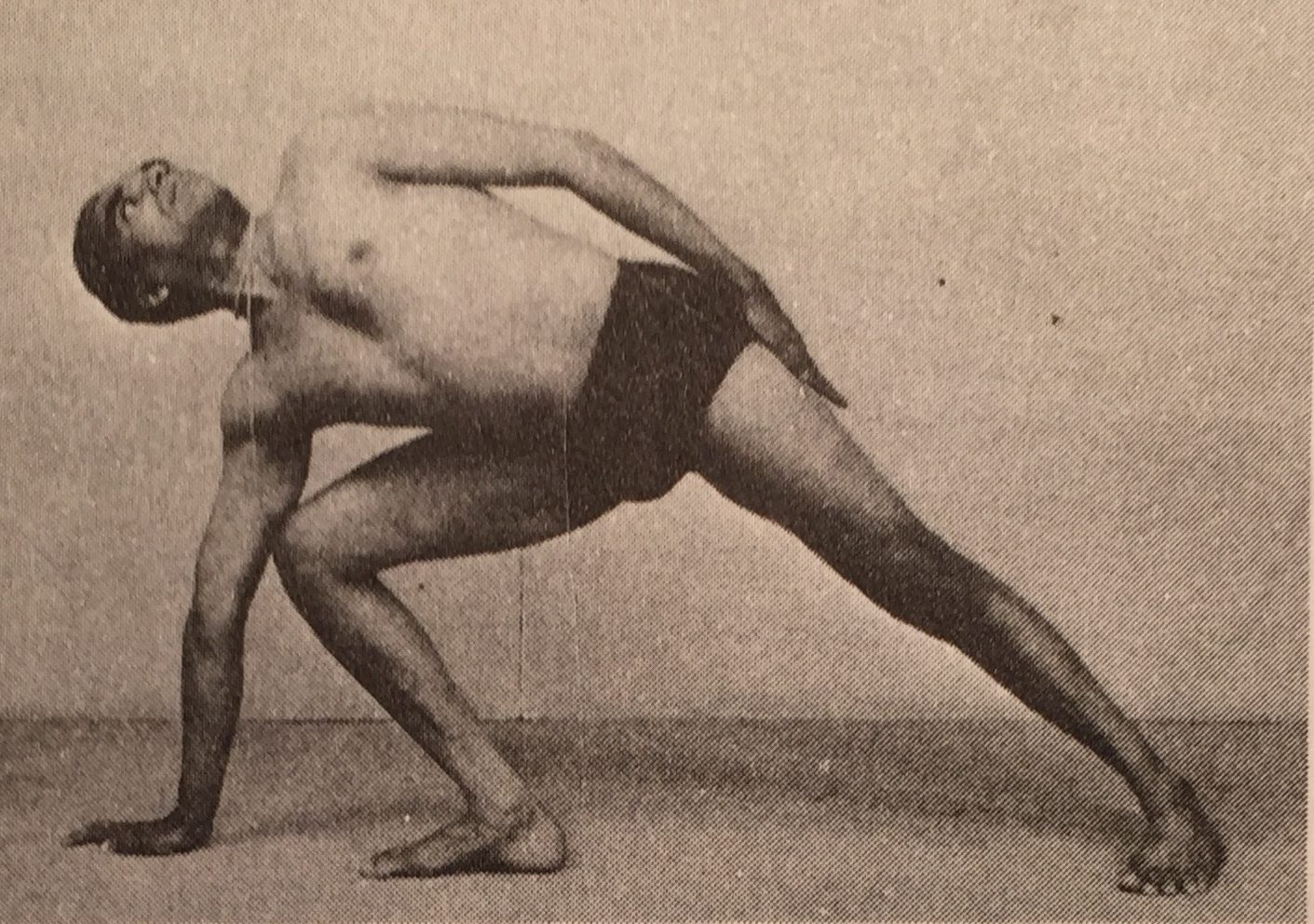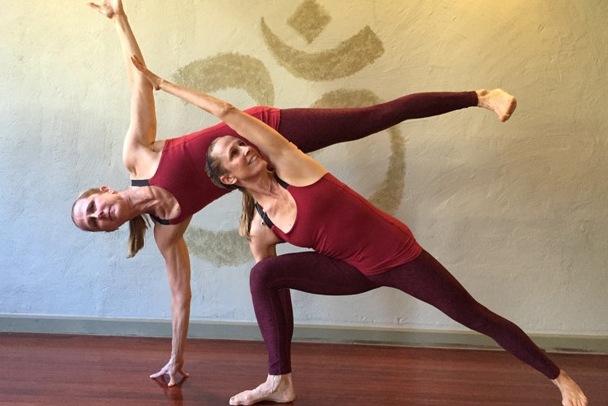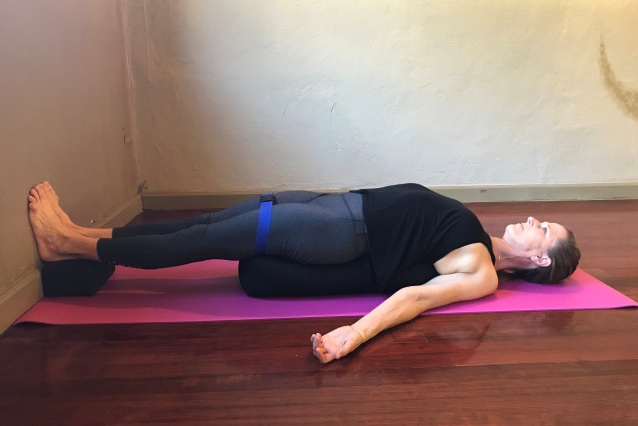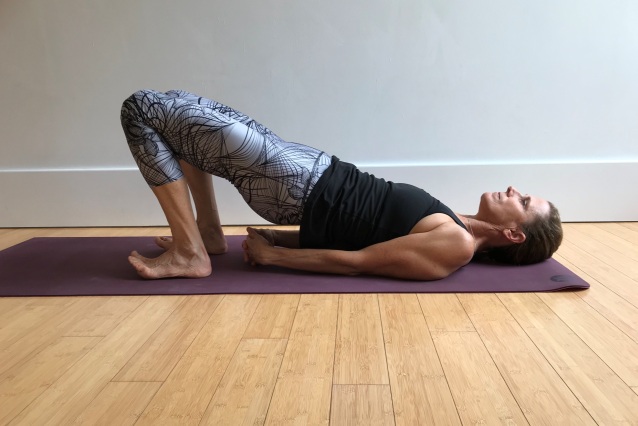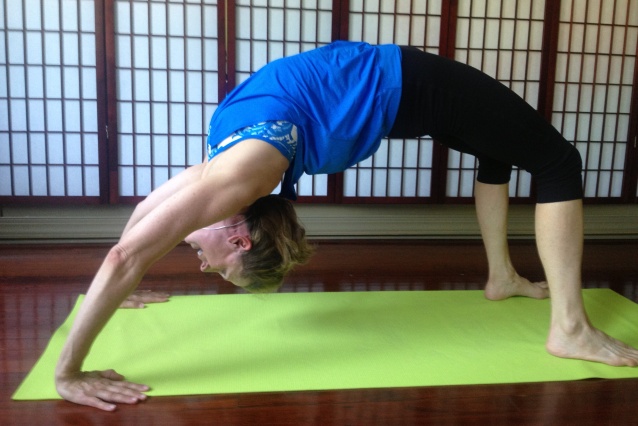This is a question I get a lot: “Should I straighten my front leg in triangle? My teacher told me I should never straighten my leg, it should always have a micro bend.”
First of all, I have to say that there is no one “right” answer. This is often frustrating because we want to know what the “right” answer is. My stock answer is “it depends”.
Generally, I would say that if the person is healthy, has nothing going on in the way of an injury, is relatively flexible, then yes, the front leg should be straight in Triangle. Tight hamstrings, and I mean tight hamstrings , like I can’t even reach my knees tight hamstrings, would pretty much necessitate bending the knee. Any knee injury would have to be looked at specifically to the individual. There are many types of knee injuries that would be adversely affected by a straight leg.
Anatomy
According to the Yoga Sutra, the asana should have the qualities of steadiness and ease. When the bones are stacked or aligned in a straight line, the effort is transferred along the length of the body part with relative ease and equilibrium. If there is a bend, the force or body weight and the relentless pull of gravity can cause that bend to increase over time. Take the example of holding a straight arm push plank position as opposed to bent arm plank position, or Caturanga. You can hold the straight arm position much longer and with more ease than you can the bent arm position. Why? Because when the bones are stacked or aligned it takes less effort to keep them that way. Muscles work in agonist and antagonistic pairs. If the appendage is straight and the muscles are engaged, both pairs of muscles are working together with the same amount of effort. If there is a bend anywhere, the muscles that are holding the bend are working harder than the opposing muscles and will fatigue faster as the relentless pull of gravity does its thing. There is a time and place for bent arm and straight arm planks. If you can’t hold a bent arm plank with your arms bent at 90 degrees, you might micro bend them to start building strength to work on a full Caturanga.
That was an obvious example, but let’s take a look at the same thing in standing poses: Triangle and Warrior II. In Triangle the front leg is supposed to be straight (see disclaimer above). In Warrior II, the front leg is supposed to be bent. Which pose do you think you could hold longer? It is easier to hold Triangle for longer than Warrior II because the bent front leg fatigues faster than a straight leg.
I am not a fan of hybrid poses. If your front leg is bent in Triangle, what is the difference between Triangle and Warrior II? One of the opposing issues here is also how much do you bend the front knee in Warrior II? I see lots of students whose front knee is not over the standing ankle in Warrior II. Sometimes it is hard to know which pose is being performed because the front knee is not bent deep enough to be Warrior II nor is the front leg straight enough to be considered Triangle Pose. It is not as important how deeply the knee is bent, but, the alignment of the front knee should be over the ankle (barring any injury). Yoga poses work the body in a full range of motion. Our job is to see that we work the body in that full range of motion: legs straight in straight leg poses, knee bent in bent leg poses.
Locked out leg
The difference between a straight leg and a bent leg is pretty obvious. The more subtle difference is between a straight leg and a locked out leg. The instruction to have a micro bend in the front leg comes from seeing a student lock their leg out. If you let your front leg lock out in Triangle Pose, it means that you have basically relaxed all of the muscles in your leg and have allowed your knee joint to move backwards as far as it will go, hyper-extending the joint. The leg will look slightly bowed in this position and the weight in the foot will lift off of the inner edge of the foot and all of the weight will be on the outer edge.





